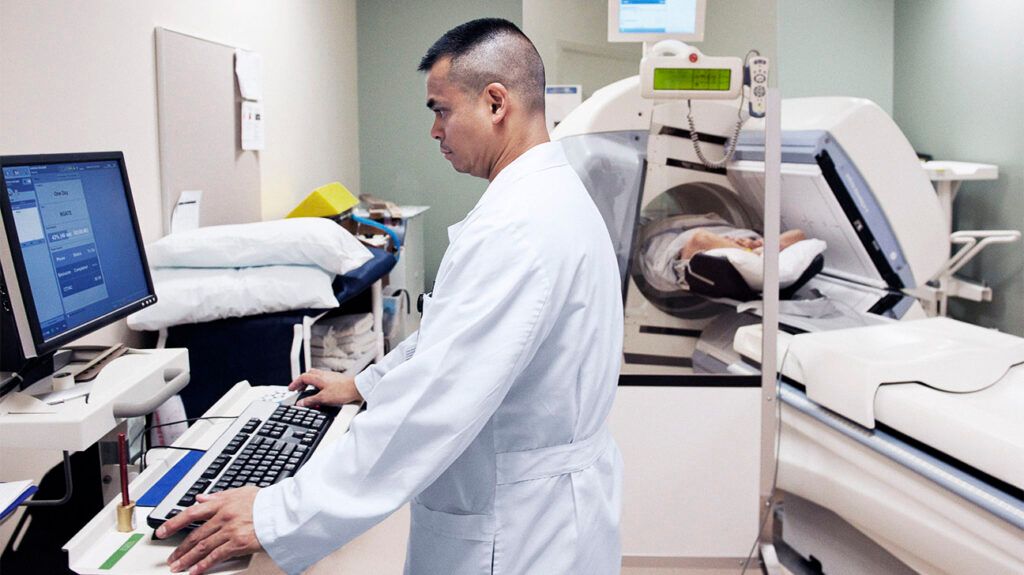Central pontine myelinolysis (CPM) is a rare but severe brain and nervous system disorder. CPM destroys myelin, which is a protective substance surrounding the nerves.
CPM often develops in response to a rapid correction of low blood sodium levels. However, it may also have other causes.
This article explains the symptoms, causes, and treatments for CPM.

CPM is a disorder that causes brain damage, often in a part of the brain stem called
The pons plays a key role in movement, hearing, and taste. During CPM, severe damage occurs to the myelin sheaths of the nerves in the pons.
This disorder is one part of a condition called osmotic demyelination syndrome (ODS). ODS can also destroy myelin in other parts of the brain, a process known as
A
- CPM occurs in 40–56% of people with ODS.
- EPM occurs in 13–35% of people with ODS.
- Both CPM and EPM occur in 23–31% of people with ODS.
CPM often severely affects cognition, which refers to someone’s thinking ability, and overall health. Symptoms
- reduced awareness
- speech impairments
- dysphagia, or problems with swallowing
- a reduced ability to complete thought processes
- weakness or paralysis, especially in the arms and legs
- stiffness
- a limited ability to sense the outside world
- coordination issues
- tremors
Complications
Severe CPM can lead to several outcomes, such as:
- locked-in syndrome, in which a person loses mobility in the entire body apart from the eyes
- coma
- death
Other complications might include:
- venous thromboembolism, which arises when a blood clot occurs in a vein
- pneumonia
- being dependent on a ventilator to breathe
- muscle breakdown
- urinary tract infections
- decubitus ulcers, which are known as bedsores or pressure ulcers
However, the mortality rate of CPM has decreased over time. According to
- extremely low blood sodium
- low potassium
- a low score on the Glasgow Coma Scale (GCS), which measures a person’s level of consciousness during a coma while staying in the hospital
- a recent liver transplant
CPM
- severe diarrhea and vomiting
- kidney failure
- certain medications, including diuretics, antidepressants, or pain relief medications
- extreme thirst
- congestive heart failure
More research is necessary to confirm exactly why correcting low sodium too quickly can damage myelin. However, the brain has its own methods of correcting levels. Overcorrecting on top of these may increase a person’s risk for CPM by pushing electrolyte balance too far in the other direction.
Particularly during low sodium, brain cells may draw in water from outside of the cells. This can lead to swelling in the brain. The water may move from the cells to the cerebrospinal fluid (CSF) to address this. The CSF typically
Some molecules, known as osmolytes, also leave the brain along with water and can reduce swelling. However, if a person corrects low sodium too quickly, the brain tissue cannot get these back, and the tissue dehydrates. Myelin damage occurs at this point, although it is unclear why.
Risk factors
People with chronically low sodium levels have a higher risk of CPM. However, anyone can develop the condition.
CPM can occur due to other conditions or health problems. These might include:
- malnutrition
- alcohol use disorder
- chronic liver disease
- kidney disease
- hyperemesis gravidarum, or severe vomiting and weight loss during pregnancy
CPM might also occur after other imbalances, such as high blood sugar levels.
According to
Doctors use
Blood tests can measure sodium levels and help doctors identify the overcorrection of low sodium. An MRI scan produces an image of the pons and other parts of the brain, showing any damage that may have occurred. However, imaging is not always necessary for diagnosis, given the severity of the disorder and how long it takes for MRI results to become available.
There is no direct treatment for the myelin damage that may occur due to CPM. If symptoms develop, supportive therapies can help improve comfort and maximize quality of life. These might include:
- ventilator support to maintain breathing function
- intense physiotherapy to restore or maintain mobility and reduce stiffness
- rehabilitation to help restore daily functions
- anti-parkinsonism drugs to reduce tremors
The first line of treatment for CPM is prevention.
Doctors measure sodium concentration in the blood in milliequivalents per liter (mEq/L). They would diagnose low sodium at
Current guidelines recommend that people with hyponatremia receive no more than 8–12 mEq/L sodium in 24 hours. If the cause of hyponatremia is unclear and low sodium lasts 48 hours or longer, this should be less than 6–8 mEq/L sodium.
Doctors should reassess the level of IV sodium hourly for those with severe hyponatremia, or less than 120 mEq/L sodium. A medication called desmopressin may also reduce a person’s risk for sodium overcorrection during hyponatremia treatment.
Central pontine myelinolysis (CPM) is a severe, rare disorder of the brain stem. It usually develops due to the excessively quick correction of low sodium levels in the blood. CPM destroys the myelin that protects nerves in the brain stem and can lead to coma and death, among other symptoms, including cognitive issues, speech impairment, and reduced mobility.
Supportive therapy may help improve the quality of life for an individual with central pontine myelinolysis. However, the best way to treat CPM is by preventing it. This involves the careful administration of IV sodium and fluids when treating hyponatremia.
